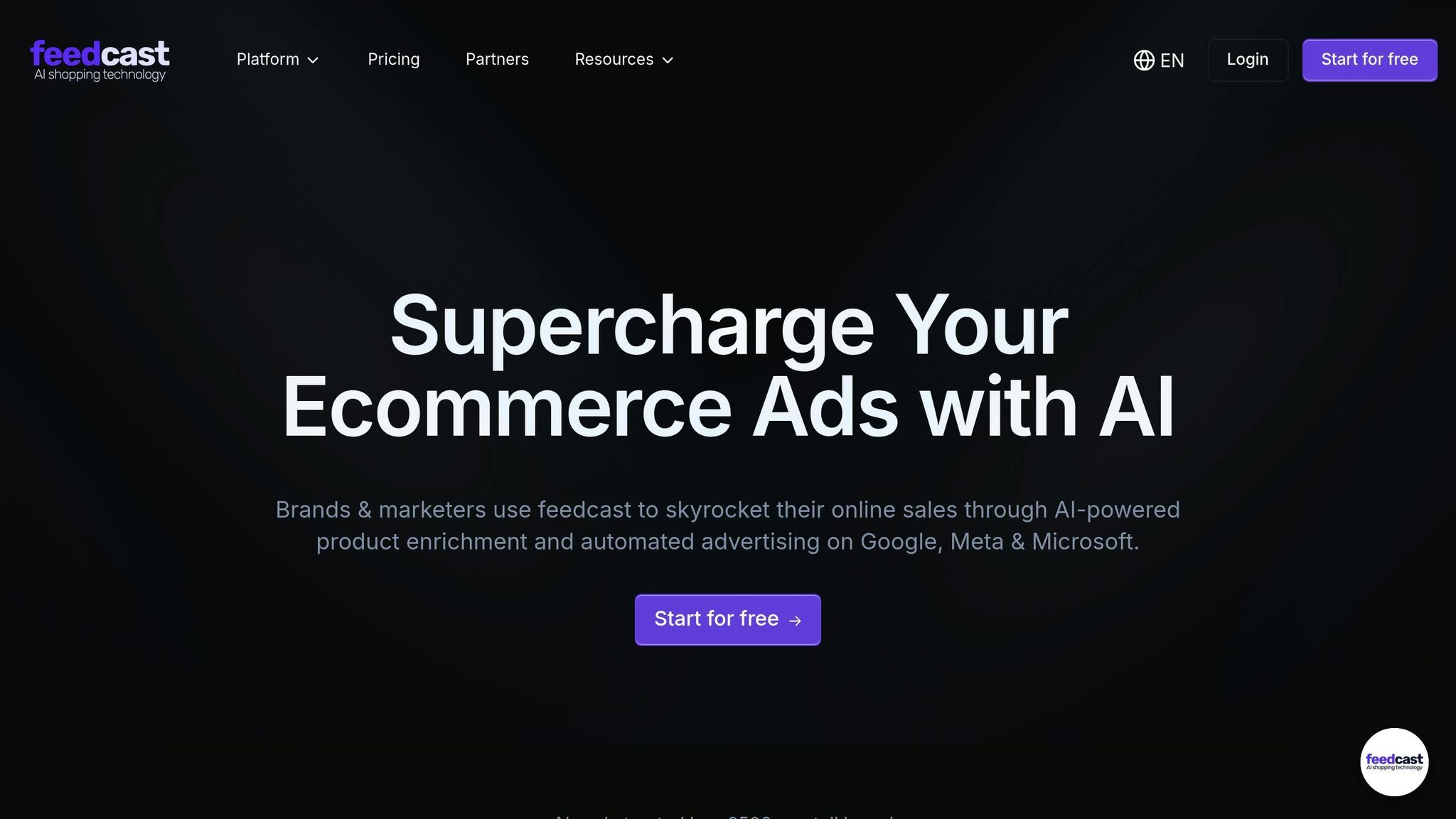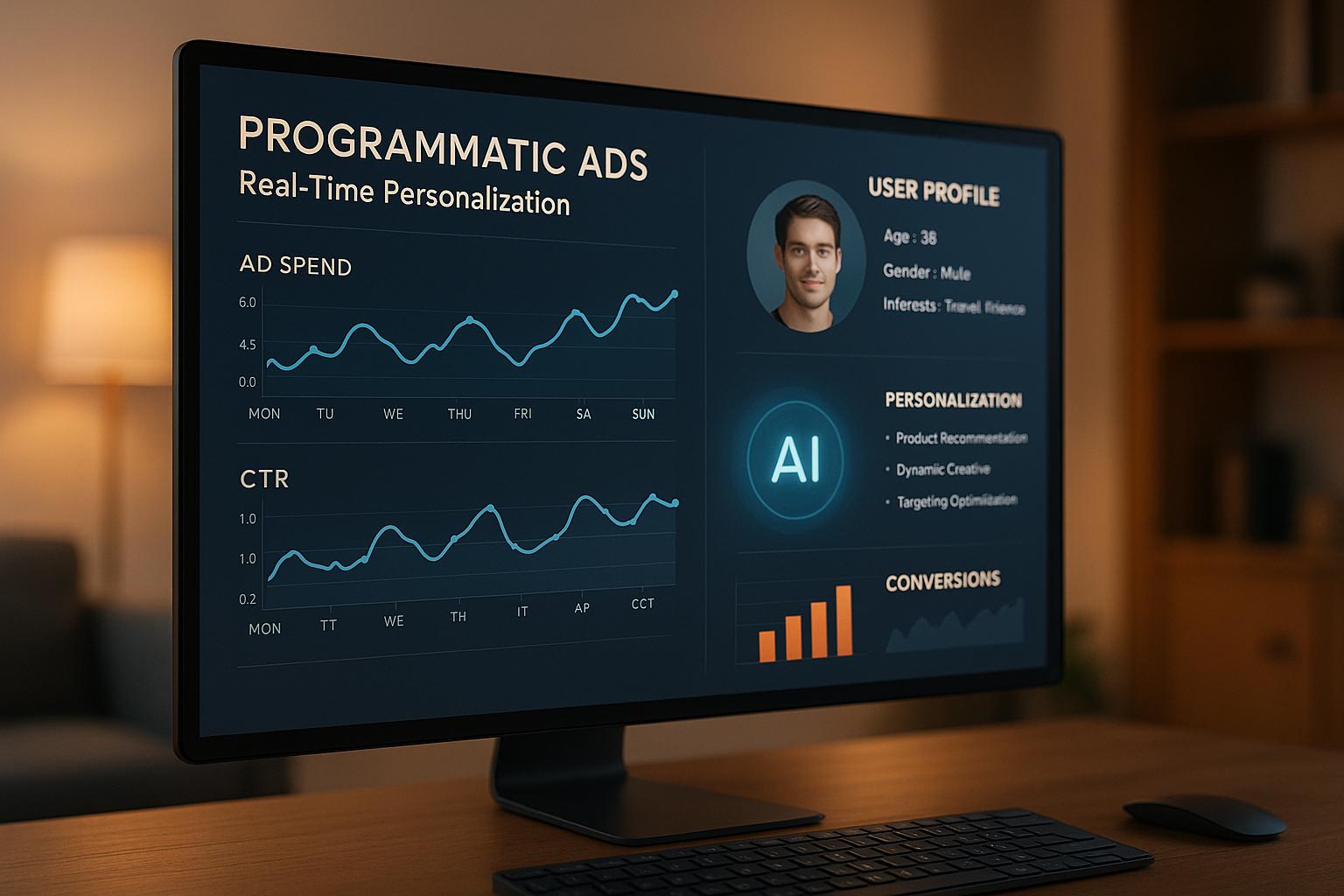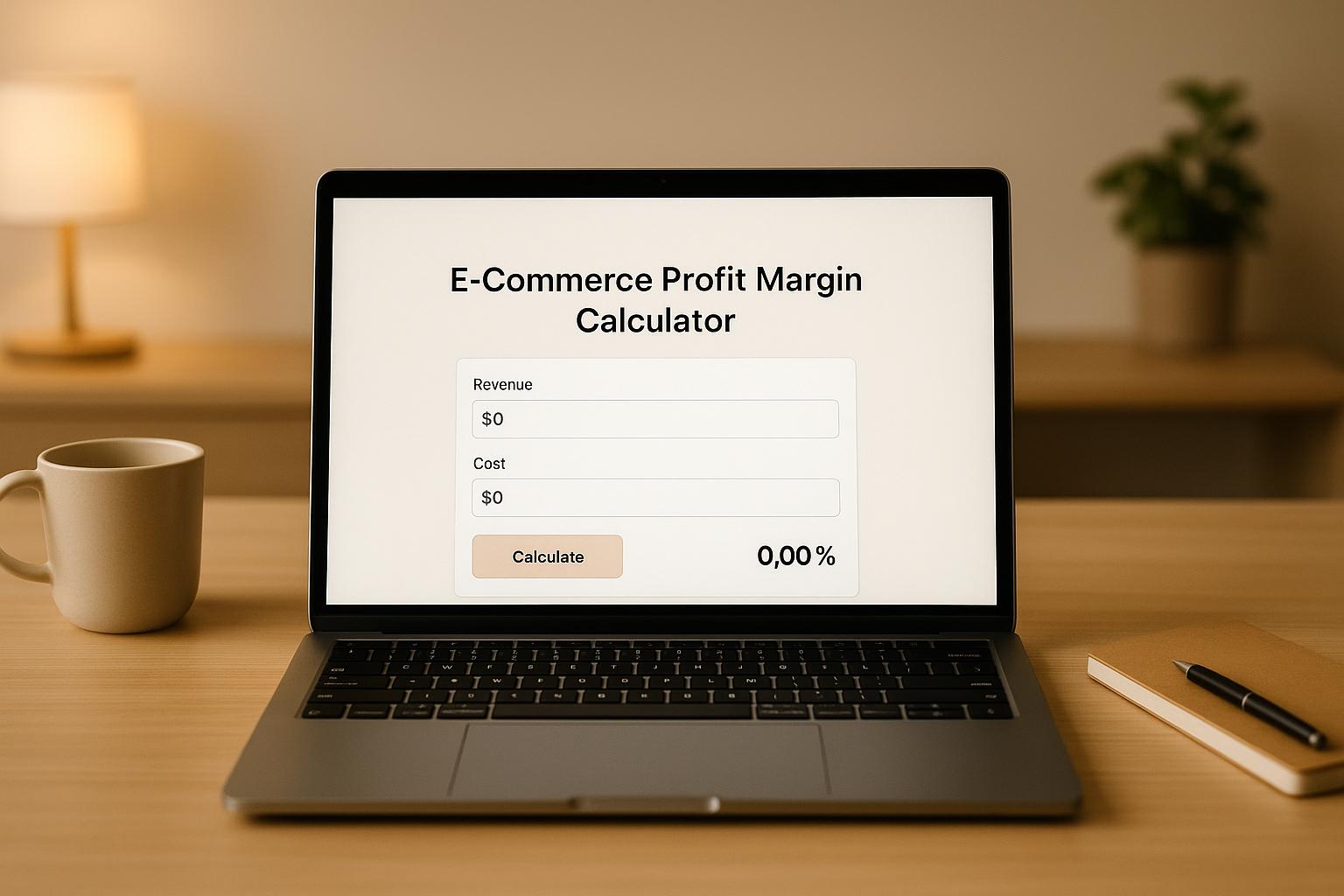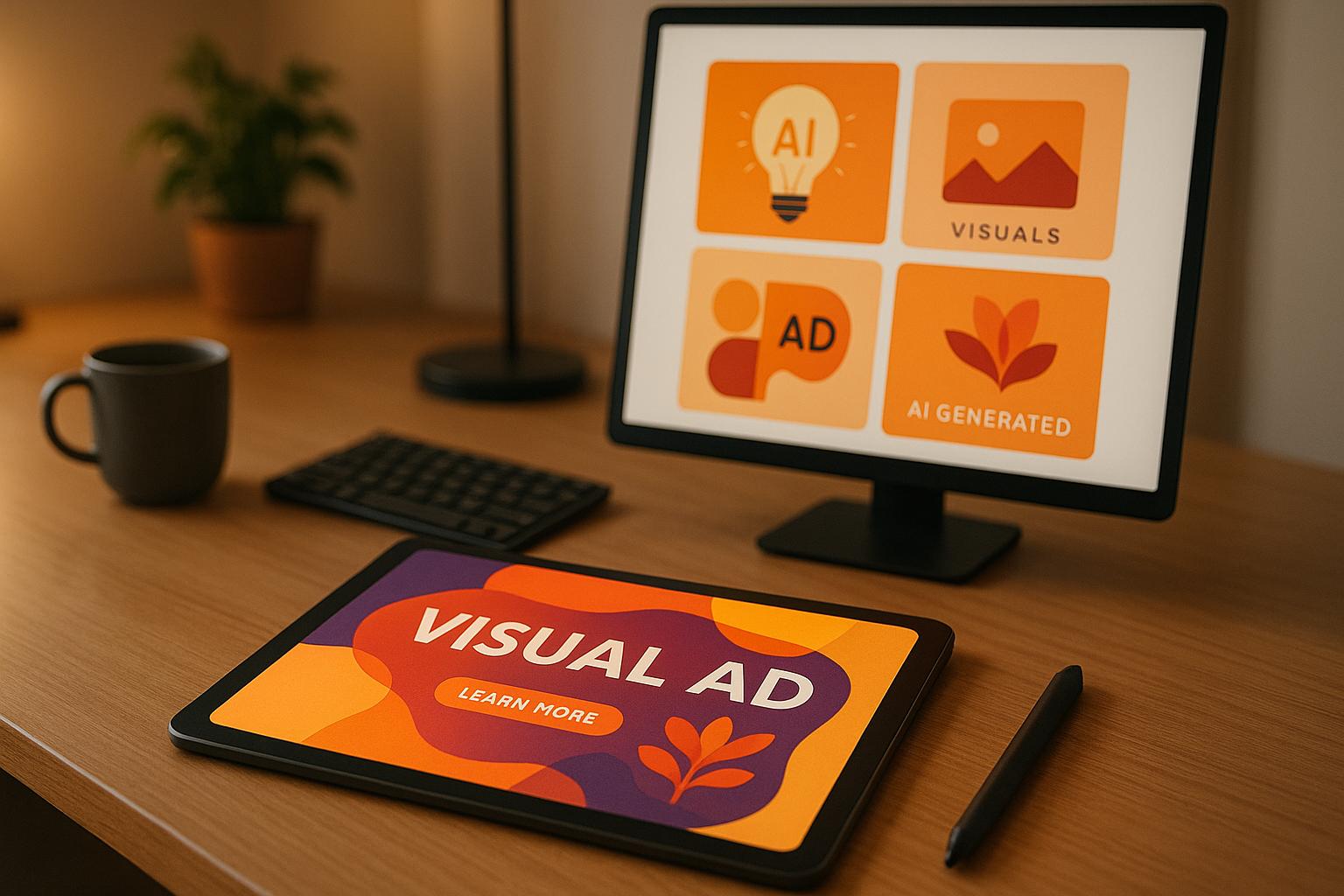How NLP Improves Ad Copy Personalization
NLP (Natural Language Processing) is transforming ad copy by automating personalization at scale. It analyzes customer data - like reviews, search queries, and behavior - to craft messages that resonate with specific audiences. This approach boosts engagement, sales, and ROI for e-commerce businesses. Tools like Feedcast simplify the process by generating tailored ads across platforms like Google and Meta, saving time and improving campaign results.
Key takeaways:
- Why it matters: Personalized ads perform better, as seen with Nike’s 20% sales increase in 2023 using NLP.
- How it works: NLP uses input analysis, sentiment detection, and automated language generation to create targeted messages.
- Challenges: Requires clean data, setup effort, and ongoing monitoring.
- Solution: Platforms like Feedcast streamline implementation, making it accessible for businesses of all sizes.
Start small by organizing product data, segmenting audiences, and testing NLP tools like Feedcast to see immediate improvements in ad performance.
Generate High-Converting Ads With AI [In minutes - Based on Data]
Key NLP Methods for Ad Copy Personalization
Getting a handle on the main methods of Natural Language Processing (NLP) can take ad personalization to the next level. These techniques work together to create ad copy that speaks directly to your audience, helping platforms deliver customized messages that resonate.
Input Analysis: The Foundation of Personalized Ads
NLP kicks off by diving into data to uncover key product details and customer preferences. It looks at everything from product attributes like brand, color, size, material, and price to audience insights such as purchase history, browsing behavior, and demographics.
Your campaign objectives also play a major role. Whether you're aiming to boost sales, raise brand awareness, or promote a specific product, the system combines these goals with the data to figure out which product features to highlight for different customer groups. For instance, if the data shows that people aged 25-35 are particularly interested in "eco-friendly" products, the system will spotlight sustainability features in ads aimed at that demographic.
Real-time analysis allows for quick adjustments based on shifting trends and behaviors, ensuring the messaging stays relevant and aligned with customer interests.
Once the input is analyzed, NLP sharpens the focus further by interpreting context and sentiment.
Context and Sentiment: Adding Depth to Ad Copy
NLP goes beyond simple keyword matching by understanding the context and emotions behind customer interactions. For example, when someone searches for "comfortable shoes for long walks", it doesn’t just pick up on "shoes" and "walks." It recognizes that comfort is the priority and that the customer likely values features like durability and support.
Sentiment analysis adds another layer by gauging the emotional tone of customer feedback, reviews, and social media posts. The system can tell the difference between enthusiastic praise like "This product is amazing!" and lukewarm comments like "This product is fine, I guess." It then adapts the ad copy to match the emotional tone that resonates with different audience segments.
Seasonal and situational factors also come into play. For example, during stressful times, ads might emphasize comfort and reliability, while celebratory periods might focus on joy and excitement. NLP systems continuously learn from customer interactions, refining their ability to craft messages that connect with specific groups.
Once context and sentiment are factored in, the next step is automating the creation of tailored ad copy.
Automated Language Generation: Scaling Personalization
NLP takes the insights from input analysis and sentiment understanding to generate ad copy that fits both the platform and the audience. The system ensures the text stays true to your brand voice while adapting to the unique context of each platform.
This means creating platform-specific variations. A Facebook ad might adopt a conversational tone, while a Google Shopping ad zeroes in on product specs and competitive advantages. The system can also craft audience-specific versions, tweaking tone, vocabulary, and message focus based on demographic data and past engagement.
Automation also simplifies A/B testing by generating multiple versions of the same message. These variations might feature different emotional appeals, calls-to-action, or product highlights, making it easier to test what resonates without manually writing dozens of options. Over time, the system learns from performance data, improving its ability to create ad copy that drives results.
Advanced NLP tools ensure that all content aligns with your brand’s established voice and messaging guidelines, maintaining consistency while keeping the ads fresh and relevant for each audience segment.
How to Implement NLP-Driven Ad Copy Personalization
Shifting from understanding NLP techniques to actually using them effectively takes a clear, structured plan. The key steps? Start with well-organized data, divide your audience into meaningful segments, and establish automated workflows to scale your personalization efforts.
Preparing Product Data for NLP
The foundation of successful NLP-driven ad personalization lies in accurate and well-prepared product data. Clean, detailed product information helps NLP systems identify the most relevant features for different customer groups and create engaging ad copy around them.
Start by standardizing your product attributes across your entire catalog. For example, ensure size labels are consistent (e.g., S, M, L, XL) and prices include proper currency formatting (e.g., $19.99). This consistency ensures that NLP systems can process your data without confusion.
Next, focus on writing structured, detailed product descriptions. Avoid generic phrases and instead include specific details that highlight features like comfort, quality, or eco-friendliness. These details give NLP systems the tools they need to craft targeted messaging.
Categories and tags are another critical piece of the puzzle. A clear category structure helps NLP systems understand product relationships. For instance, a home goods retailer might use "Kitchen > Cookware > Non-stick Pans" instead of a generic "Pans" category. Add descriptive tags that capture product benefits, use cases, or target audiences to provide even more context.
Don’t overlook historical performance data - it’s a goldmine for personalization. Analyze what features resonate most in your current ads. For example, if customers respond well to mentions of "free shipping" or "30-day returns", be sure to include these details in your product data. Seasonal trends also matter: winter coats should carry tags like "cold weather" or "winter essentials."
Lastly, image data can also enhance NLP systems, especially those that analyze visual content. Use high-quality, consistent images with descriptive file names. A name like "blue-denim-jacket-front-view.jpg" provides context that "IMG_001.jpg" simply doesn’t.
With your product data in order, you’re ready to focus on segmenting your audience for more precise messaging.
Audience Segmentation for Targeted Messaging
To make NLP personalization truly effective, you need to know your audience inside and out. Smart segmentation lets you group customers based on shared traits, enabling NLP to craft messages tailored to their specific interests and behaviors.
Start with demographic data, but don’t stop there. Behavioral data offers deeper insights. For example, customers who frequently purchase premium products might respond to messaging that emphasizes quality, while bargain shoppers are more likely to engage with ads highlighting savings and discounts.
Browsing behavior is another valuable clue. Someone who spends time reading product reviews likely values detailed information and social proof. Ads for this group should focus on customer testimonials and product details. On the other hand, customers who quickly add items to their cart and check out prefer straightforward messaging with clear calls-to-action.
Purchase timing and frequency also open doors for personalization. First-time buyers might need more information about your brand, while loyal customers may respond better to exclusive offers or new product announcements.
By combining multiple data points, you can create highly specific audience segments. For instance, "frequent buyers aged 25-40 who prefer eco-friendly products and engage with email campaigns" represents a precise group that would appreciate messaging about sustainable product launches via email.
Geography and seasonality add even more layers to your strategy. Customers in colder climates need different recommendations than those in warmer areas, and timing matters too - think back-to-school promotions in August or holiday gift guides in December.
Once you’ve defined your audience segments, it’s time to put your personalization efforts on autopilot with automated workflows.
Setting Up AI-Powered Ad Copy Workflows
With refined product data and well-defined audience segments in place, automated workflows can help you generate and optimize ad copy at scale. These workflows save time and ensure consistency across multiple advertising platforms.
Feed management is the backbone of these workflows. Tools like Feedcast allow you to connect your product data to platforms like Google Ads, Facebook, Instagram, and Microsoft Ads through a single interface. This eliminates the need to manually update product information across channels. For instance, if you update a product description or price in your main catalog, these changes are automatically reflected across all connected platforms.
Ad templates with dynamic fields make automation even more powerful. A template like "[Product Name] - [Key Feature] starting at [Price]. [Call-to-Action] with [Shipping Offer]." can adapt to different products and audiences. NLP systems fill in these fields based on the product and segment, ensuring each ad feels personalized.
To keep improving, set up performance tracking for metrics like click-through rates, conversion rates, and return on ad spend. NLP systems can analyze this data to refine their ad copy over time, learning what works best for each audience segment.
Automated A/B testing takes this a step further. The system can create multiple versions of an ad, test them against each other, and automatically allocate more budget to the top-performing variations. This ensures your messaging stays relevant and effective.
Quality control is essential to maintain brand consistency. Set up approval workflows for new ad copy, establish brand voice guidelines, and use filters to flag any content that might require human review. This balance lets you scale automation without sacrificing quality.
Finally, integrating these workflows with your existing marketing tools ensures everything runs smoothly. Customer data from your CRM, inventory updates from your e-commerce platform, and performance analytics all feed into the NLP system, creating a unified approach to personalization.
Benefits and Challenges of NLP-Powered Ad Copy Personalization
Using NLP (Natural Language Processing) for ad personalization brings a mix of exciting advantages and some hurdles that need careful consideration. Let’s break it down.
Benefits of NLP for Ad Copy Personalization
Greater relevance and engagement are among the standout benefits. Ads that resonate with customer interests and needs naturally grab attention and drive action. When messaging feels tailored rather than generic, engagement rates climb, and conversions follow.
Time savings are another major perk. Instead of manually crafting variations for different products or audience segments, NLP systems can whip up personalized ad copy in seconds. This means less time spent on repetitive tasks and more time to focus on strategy.
Effortless scalability becomes possible across platforms. Whether it's Google Ads, Facebook, Instagram, or Microsoft Ads, NLP-powered tools can adapt messaging to fit each platform’s unique style and audience preferences. This ensures your brand voice stays consistent while meeting platform-specific demands.
Continuous learning and optimization are baked into NLP systems. As campaigns run, they gather performance data, figuring out which messages resonate most with specific audiences. This feedback loop allows the system to refine future ad copy, leading to better results over time.
Cost efficiency is a natural byproduct of these time savings and improved performance. By reducing manual work and increasing ROI, the upfront investment in NLP tools often pays off quickly.
Better customer experiences come from personalized messaging. When ads align with a customer’s interests or shopping habits, they feel more relevant, leaving a positive impression and increasing the likelihood of repeat business.
But while these benefits are compelling, implementing NLP isn’t without its challenges.
Challenges of Implementing NLP
Despite the advantages, integrating NLP into your ad strategy comes with its own set of obstacles.
Data quality is often the biggest challenge. For NLP systems to generate effective ad copy, they need clean, well-structured product data. Poor-quality data can result in irrelevant or confusing ads, which means businesses may need to put in significant effort upfront to organize and standardize their product catalogs.
Complex setup processes can be overwhelming, especially for teams without technical expertise. Configuring audience segments, linking data sources, setting up automation, and integrating with existing tools all require careful planning - and often, outside technical support.
Maintaining brand voice consistency in automated content is tricky. Ensuring that the system reflects your brand’s tone and style requires ongoing fine-tuning and monitoring.
Data privacy and compliance add another layer of complexity. Regulations like GDPR and CCPA mean businesses must handle customer data responsibly, ensuring proper consent and privacy measures are in place.
Ongoing monitoring is essential. NLP systems aren’t “set it and forget it” tools. Regular reviews are needed to ensure the generated content is appropriate, effective across audience segments, and adapting to market shifts.
Integration with existing tools can pose technical challenges. Connecting NLP systems with your e-commerce platform, CRM, ad accounts, and other tools often requires custom solutions or middleware, which can be time-consuming.
Comparison Table: Benefits vs. Challenges
Here’s a side-by-side look at the benefits and challenges to help you weigh your options:
| Benefits | Challenges |
|---|---|
| Higher engagement rates with personalized messaging | Data quality issues requiring clean, structured product information |
| Time savings from automated copy generation | Complex initial setup that demands technical know-how |
| Scalability across multiple platforms | Maintaining brand voice across automated outputs |
| Dynamic optimization from performance data | Compliance with privacy laws like GDPR and CCPA |
| Cost efficiency through reduced manual work and better ROI | Regular monitoring to ensure performance and relevance |
| Improved customer experience with targeted ads | Integration hurdles with current marketing tools |
| Continuous learning for ongoing improvements | Resource demands for setup, training, and maintenance |
The real trick is evaluating these pros and cons based on your business needs and capabilities. Companies with well-organized product data and access to technical expertise often find the benefits far outweigh the challenges. For businesses with limited resources, platforms like Feedcast can simplify the process by handling much of the technical heavy lifting.
Starting small and scaling up is a smart way to approach NLP-powered personalization. Experiment with a subset of your product catalog and focus on a few key audience segments. As your team becomes more comfortable with the technology, you can gradually expand, addressing challenges step by step while building confidence and expertise.
sbb-itb-0bd1697
Feedcast: Simplifying NLP-Based Ad Personalization for E-commerce

Feedcast tackles the challenges of implementing NLP-driven personalization by offering a streamlined platform tailored for e-commerce businesses. Many companies struggle with the technical demands and resources required for such solutions, but Feedcast removes these barriers. With its user-friendly platform, businesses can integrate NLP-based personalization without needing advanced technical skills or lengthy setup. Let’s break down how Feedcast’s features make ad personalization easier.
Key Features of Feedcast for Ad Copy Personalization
Feedcast’s AI-powered tools transform basic product data into polished, optimized content that connects with your audience. Instead of manually creating unique descriptions for thousands of products, the platform automates this process while keeping your catalog consistent and professional.
The personalized ad copy generation feature takes it further by crafting messages tailored to specific advertising platforms. Using NLP algorithms, Feedcast analyzes sentiment, preferences, and language patterns to create ads that resonate with each platform’s audience. Whether you’re running campaigns on Google, Meta (Facebook and Instagram), or Microsoft Ads, the system adapts your messaging to fit the tone and style of each channel.
With multi-channel management in a single dashboard, Feedcast eliminates the hassle of fragmented workflows. You can manage all your ad campaigns in one place, ensuring consistent messaging across platforms. The platform also automates A/B testing, helping you refine your ads based on real performance data rather than guesswork.
Practical Benefits for E-commerce Businesses
E-commerce businesses using Feedcast save a tremendous amount of time and effort thanks to automation. Tasks like writing product descriptions, generating ad variations, and managing campaigns across platforms - once time-consuming - are now handled automatically. This allows marketing teams to focus on strategic growth rather than repetitive tasks.
Boosted product visibility is another major advantage. Feedcast’s AI-enhanced product feeds optimize titles, descriptions, and attributes, making your products more appealing and easier to find. This leads to higher click-through rates and better conversions, directly improving the effectiveness of your advertising campaigns.
By combining targeted messaging, optimized ads, and reduced manual labor, Feedcast also delivers better ROI. Its real-time analytics and unified reporting make it easy to see what’s working, enabling smarter decisions that maximize your ad budget’s impact.
For Google Shopping campaigns, Feedcast’s Google CSS (Comparison Shopping Service) partnership offers additional cost savings. This gives U.S. businesses a competitive edge in one of the most crucial advertising channels for e-commerce.
Why Feedcast Works Well for U.S.-Based E-commerce Businesses
Feedcast is designed with U.S. businesses in mind, ensuring smooth integration with local standards and practices. From using USD currency to following MM/DD/YYYY date formatting and standard U.S. number conventions, the platform aligns perfectly with American business operations.
The platform’s performance tracking and analytics are tailored to reflect U.S. standards, ensuring accuracy and compliance with local norms. This means businesses can focus on growth without worrying about formatting issues or data inconsistencies.
Feedcast also offers flexible pricing to accommodate businesses of all sizes. Plans range from a free tier to $249/month, with the Autopilot plan at $99/month providing NLP-powered features for up to 1,000 products across multiple ad channels. This makes advanced personalization accessible even for smaller e-commerce operations.
Conclusion: Using NLP for E-commerce Growth
Natural Language Processing (NLP) is reshaping how e-commerce businesses approach ad copy, making it possible to produce highly targeted and personalized content on a massive scale. By utilizing techniques like automated language generation and sentiment analysis, marketers can better understand customer behavior, gauge sentiment, and craft tailored messaging - all tasks that would be virtually impossible to execute manually across thousands of products and numerous advertising platforms.
Key Takeaways
The best e-commerce strategies find a balance between automation and personalization. NLP makes this possible by processing vast amounts of customer data to create messaging that resonates with specific audiences. For example, it can automatically generate diverse product descriptions tailored to different audience segments and platforms, saving time without sacrificing relevance.
You don’t need advanced technical skills to get started. Tools like Feedcast simplify the process, offering accessible solutions that empower businesses of all sizes to compete. Start by ensuring your product data is clean and well-organized, then gradually expand your personalization efforts as you see results.
Automation powered by NLP doesn’t just save time - it allows marketing teams to shift their focus from repetitive tasks to strategic growth initiatives. Additionally, these tools help maintain a consistent brand voice across all channels by adapting messaging to fit each platform’s unique requirements.
With these tools and strategies, you can refine your approach and take meaningful steps toward more effective e-commerce marketing.
Next Steps for E-commerce Marketers
Ready to implement NLP-driven ad copy personalization? Here’s how to get started:
- Make sure your product titles, descriptions, and attributes are accurate and complete before diving into automation tools. Clean data is the foundation for success.
- Test NLP capabilities without a big upfront expense. Many platforms, like Feedcast, offer free plans or trial periods. Feedcast, for instance, provides a free tier to explore AI-powered features, with paid plans starting at $99/month for up to 1,000 products.
- Start with your most profitable channel. Focus on mastering NLP-driven personalization on the channel that generates the most revenue, then expand to others. This phased approach allows you to measure impact and refine your strategy effectively.
- Keep an eye on performance metrics early on. Tracking key metrics will help you optimize your approach and show a clear return on investment.
FAQs
How does NLP identify emotional tones in customer feedback to create more personalized ad copy?
How NLP Identifies Emotional Tones in Customer Feedback
Natural Language Processing (NLP) dives into customer feedback to uncover emotional tones by examining language patterns like word choice, punctuation, and sentence structure. With the help of machine learning and sentiment analysis, it can pinpoint emotions such as happiness, frustration, or even enthusiasm, giving brands a clearer picture of how their customers truly feel.
This emotional insight is a game-changer for e-commerce marketers. By recognizing these cues, they can create ad copy that resonates with their audience on a deeper level. The result? Messaging that feels more relatable, connects with customers emotionally, and delivers a more personalized shopping experience.
How can e-commerce businesses prepare their product data for effective use in NLP systems?
To get product data ready for NLP systems, e-commerce businesses need to prioritize data cleaning and standardization. This means clearing out duplicate or irrelevant entries and ensuring that product titles, descriptions, and attributes are consistent and well-organized. Filling in gaps, like missing GTINs, custom labels, or product categories, can also improve the overall data quality.
It’s equally important to keep an eye on inaccuracies and refresh outdated information regularly to maintain accuracy. When product data is clean, complete, and reliable, NLP systems can create more tailored and effective ad copy, ultimately improving campaign results.
How can small e-commerce businesses use NLP to personalize ad copy without spending too much?
Small e-commerce businesses don’t need a big budget to take advantage of AI tools for personalized ad copy. There are plenty of affordable, and even free, platforms that use natural language processing (NLP) to create custom messaging tailored to specific customer groups. This kind of personalization can make ads more engaging and boost their overall performance.
Getting started is simple. Look for AI tools that integrate seamlessly with your current e-commerce platform. These solutions can automate ad creation and fine-tune content for different audiences, cutting down on the time and effort required. By choosing tools that are both user-friendly and budget-friendly, small businesses can level up their advertising game without overspending.
Yohann B.




